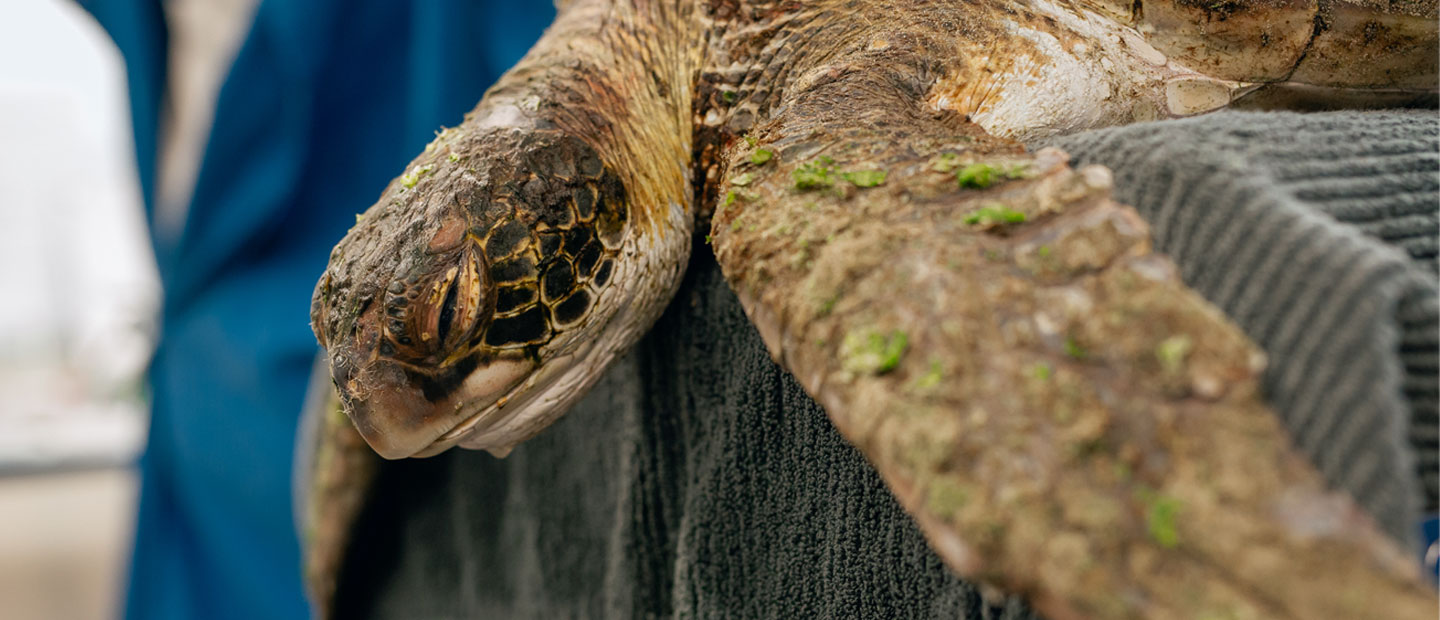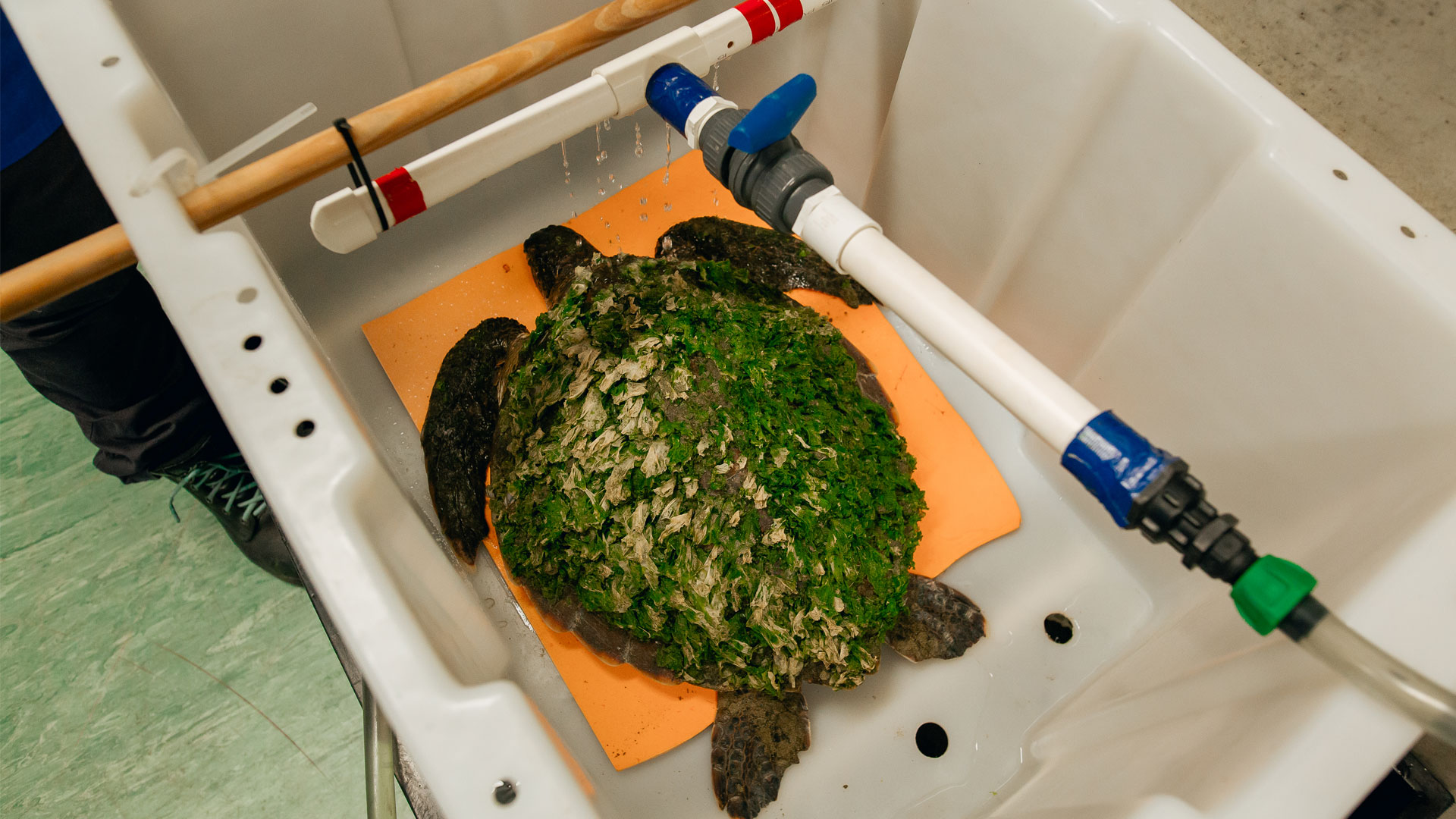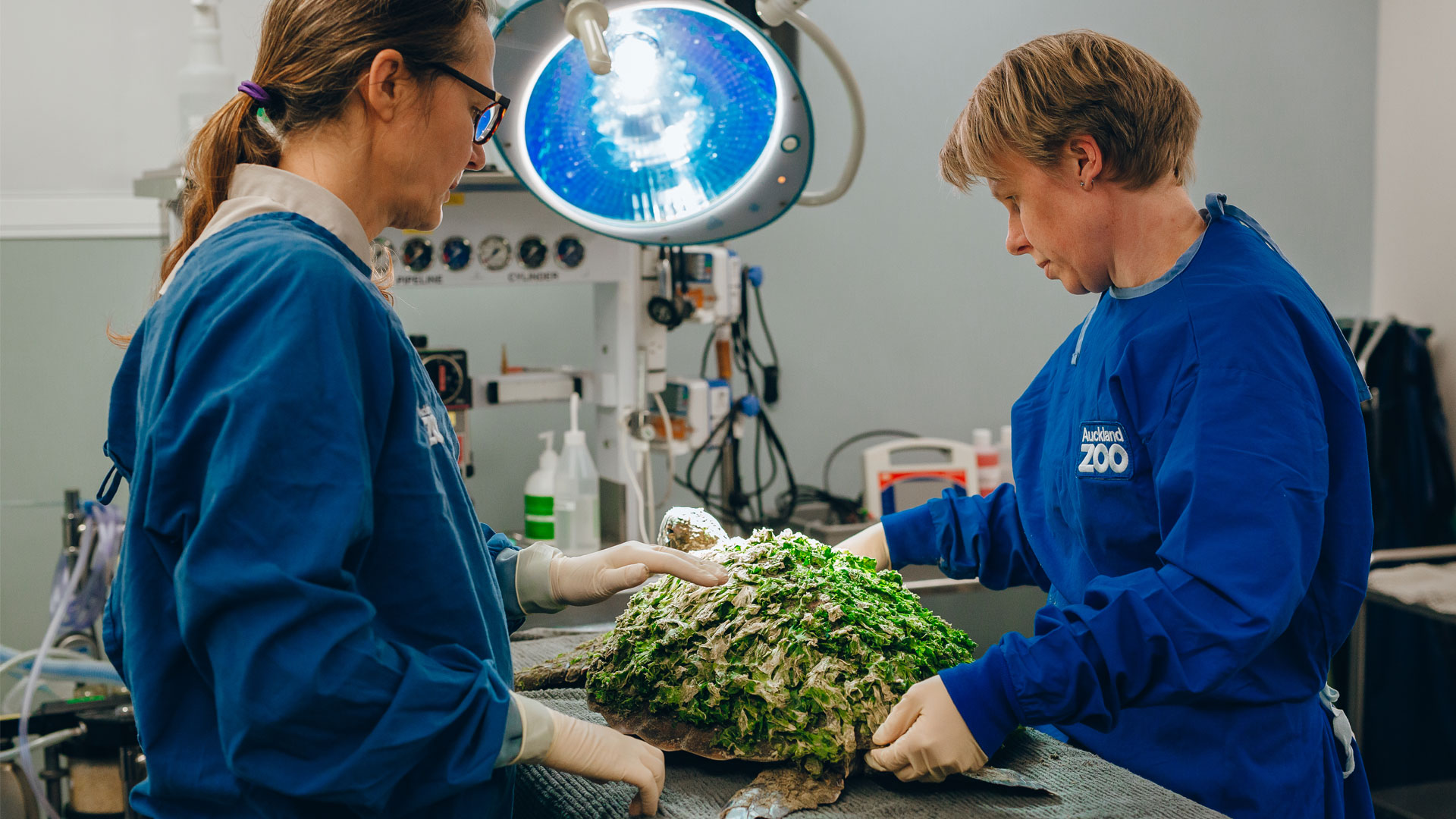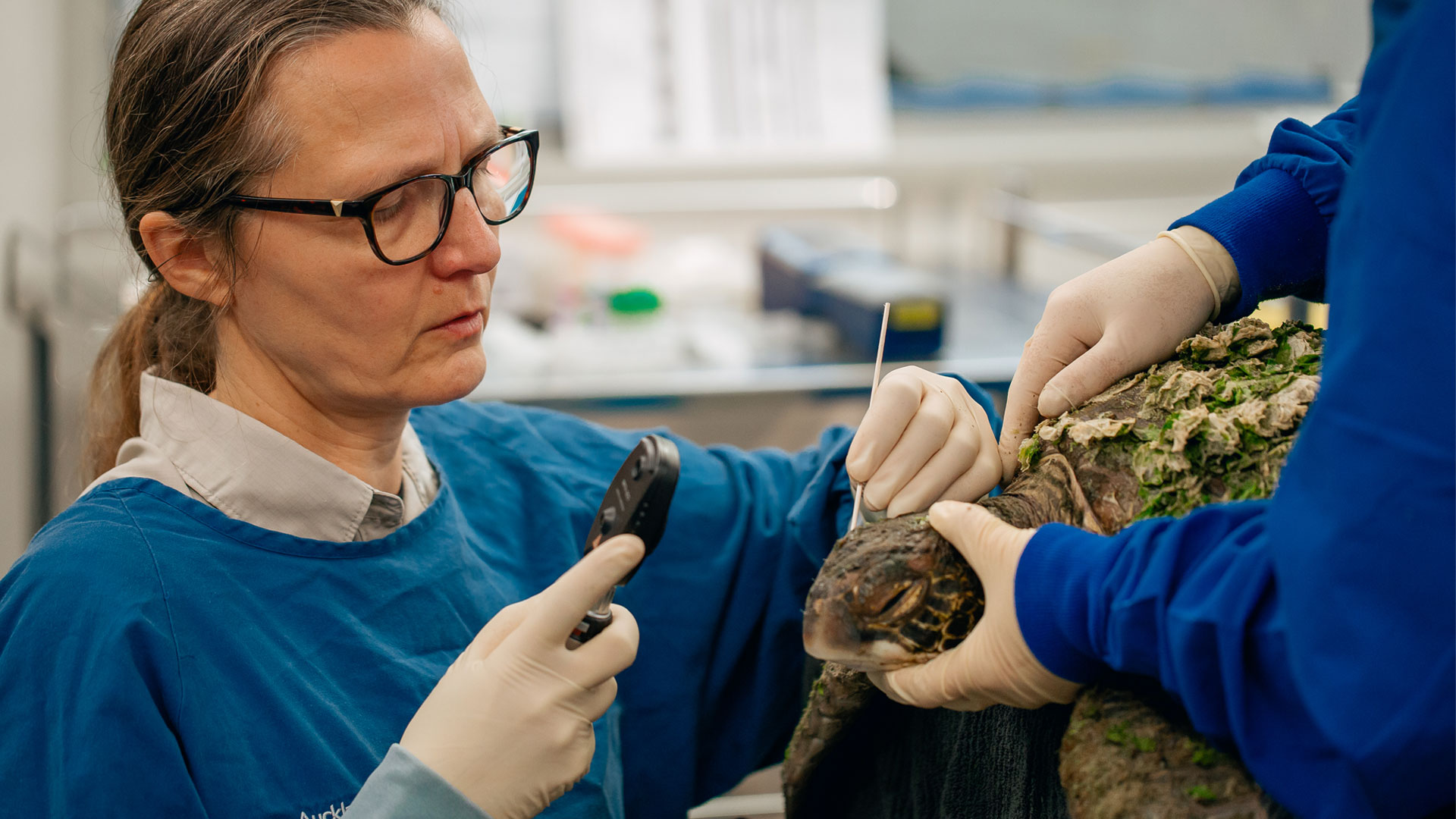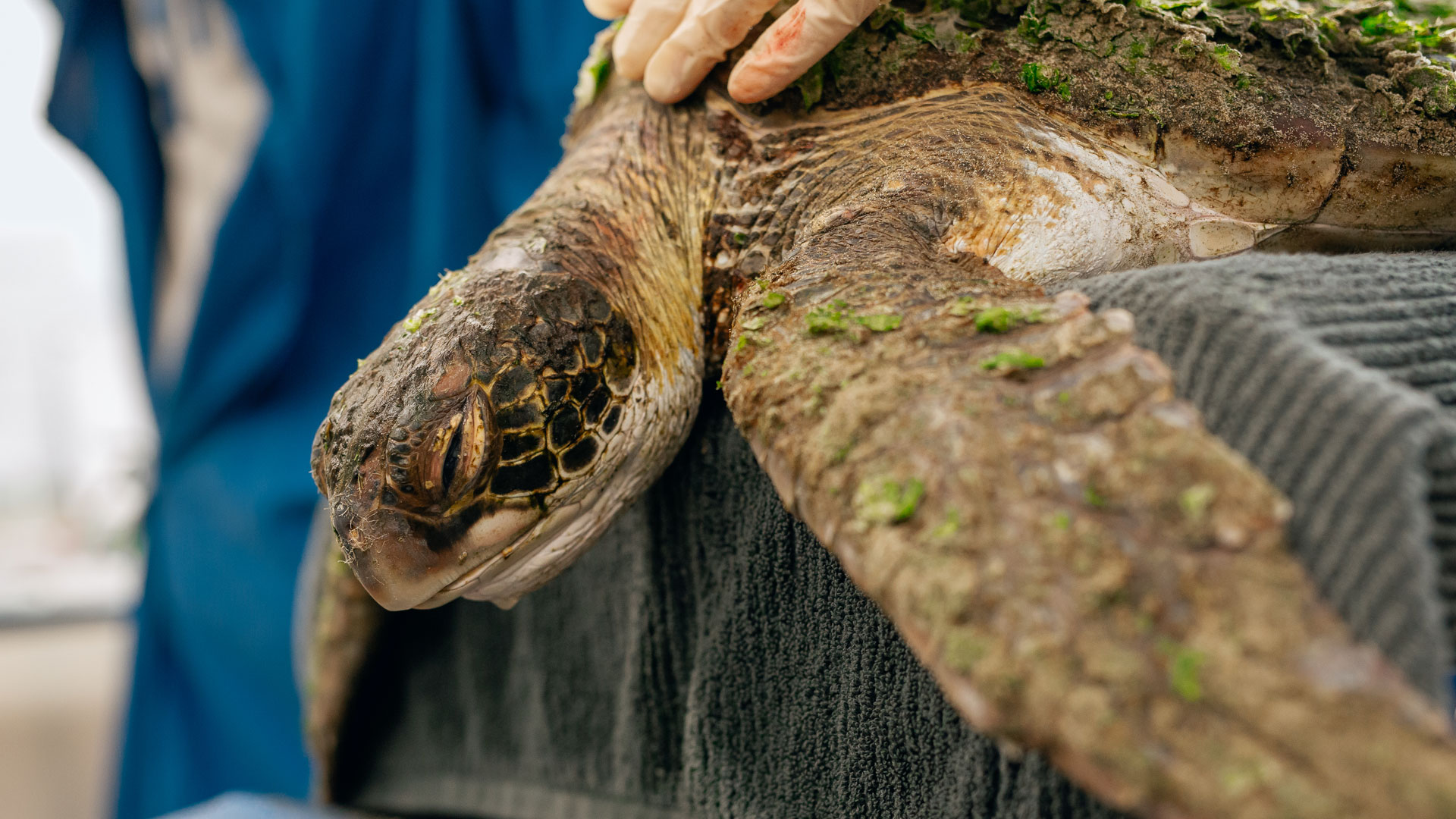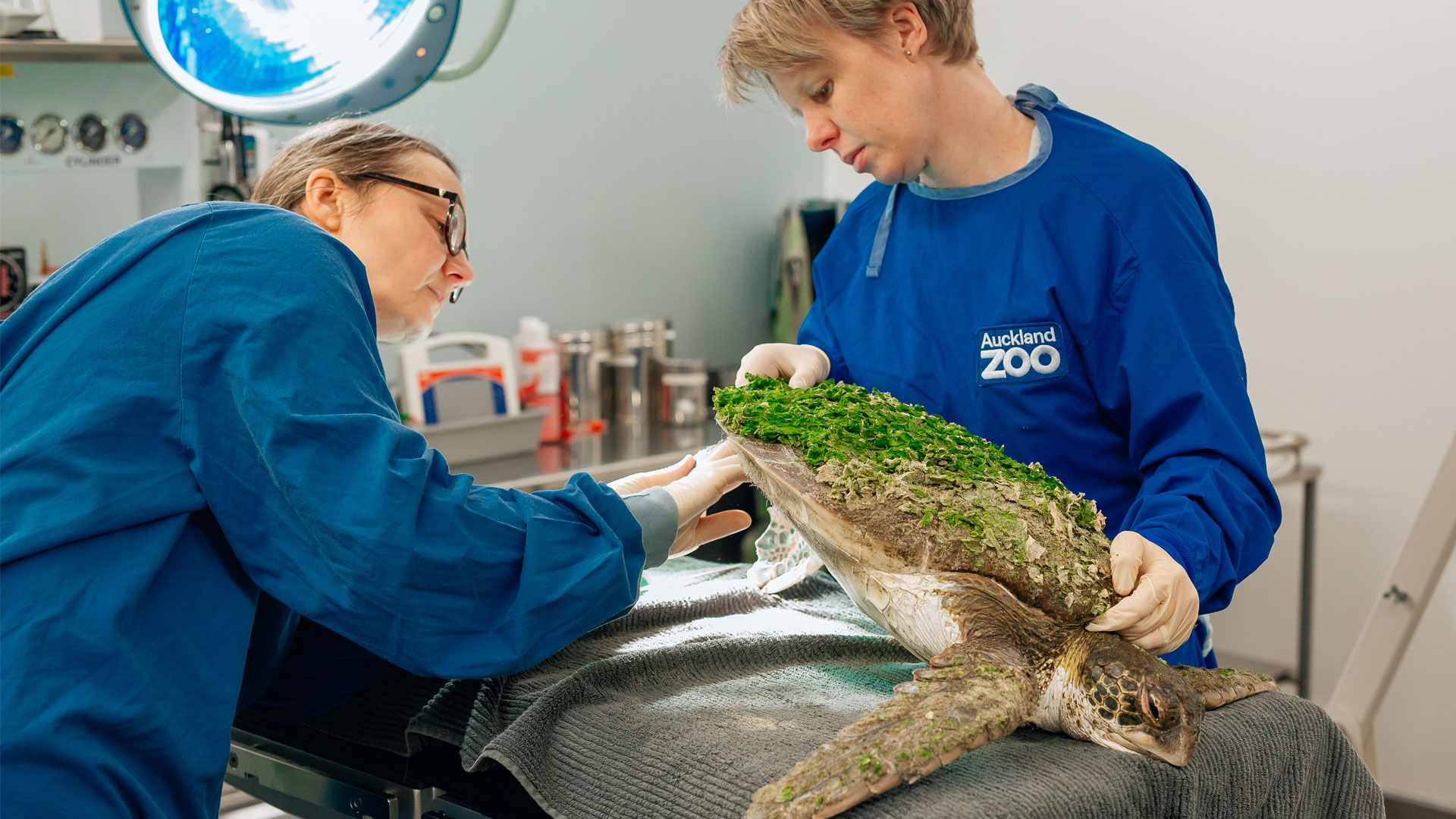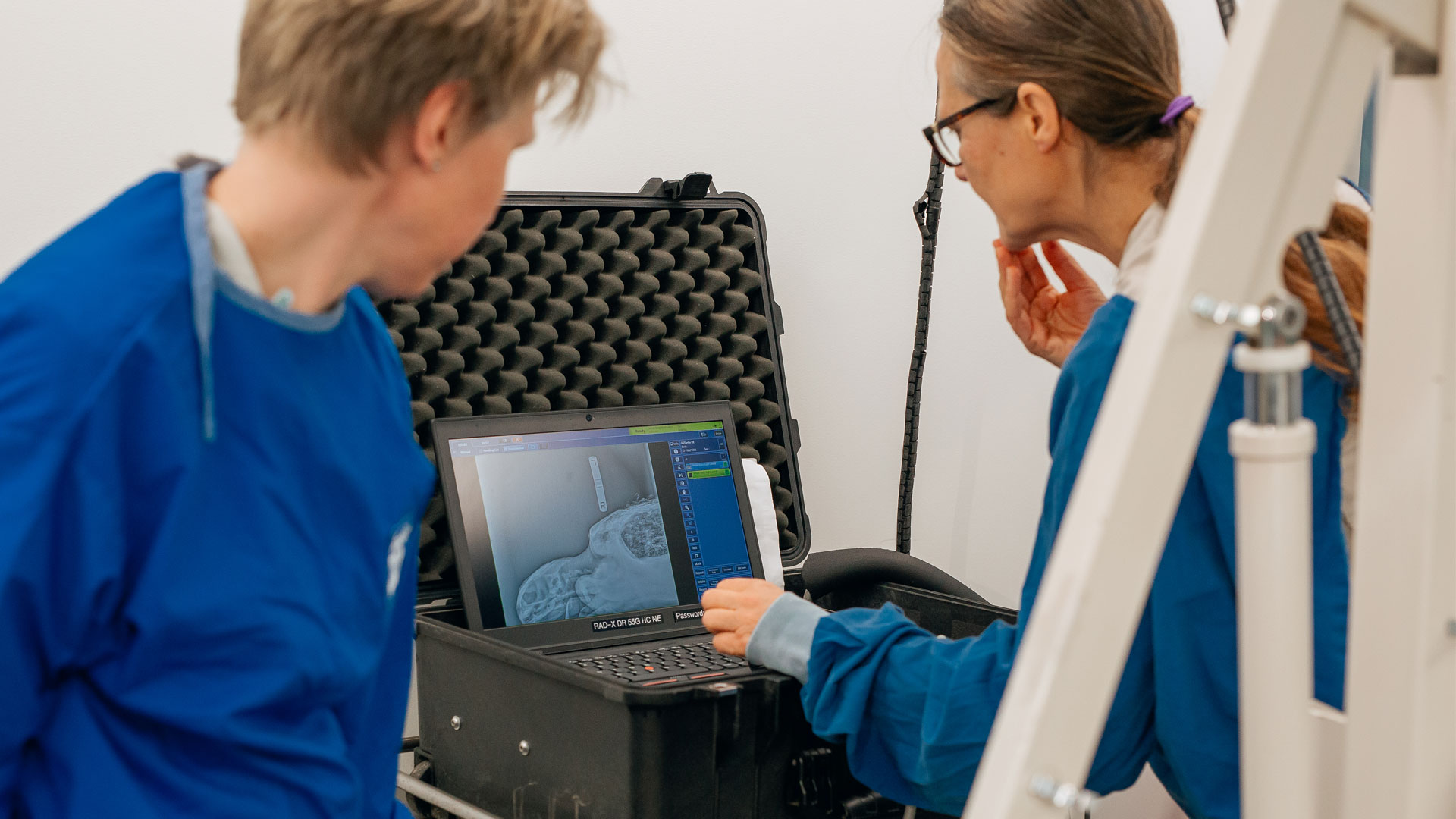This wild green sea turtle patient was cared for at our Vet Hospital this week, but unfortunately was too ill to survive.
Our veterinary services manager James says “the first 72 hours of receiving a wild turtle patient are critical, and some turtles die in this period. We typically get turtles admitted after big storms, where the big waves wash weak turtles onto the beach”.
When sea turtles beach themselves in New Zealand they are near-death, and this is a last ditch attempt to prevent themselves drowning. This was the case for this green turtle which was found on a beach in Kaitaia. Any turtle found on a beach in New Zealand needs to be reported to the Department of Conservation immediately, so they can get the turtle the urgent veterinary help it requires.


